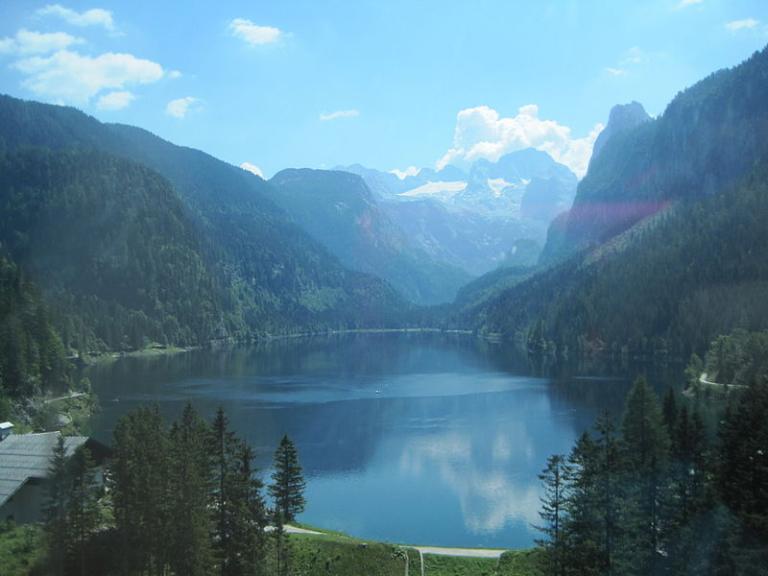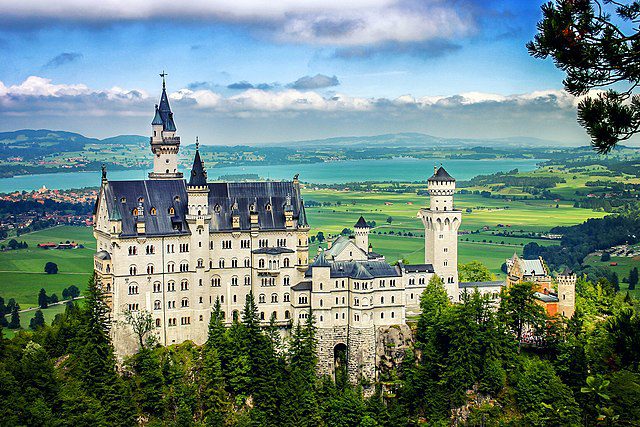In the Halls of the Mountain King
Sahar Qumsiyeh is an assistant professor of mathematics at Brigham Young University-Idaho in Rexburg and the author of Peace for a Palestinian: One Woman’s Story of Faith Amidst War in the Holy Land. With her kind permission, I share here four recent entries from her Facebook page.

***
Sahar Qumsiyeh is an assistant professor of mathematics at Brigham Young University-Idaho in Rexburg and the author of Peace for a Palestinian: One Woman’s Story of Faith Amidst War in the Holy Land. (The Interpreter Foundation published two reviews of her book soon after its publication. See “Peace in the Holy Land,” by Shirley S. Ricks, and “Dehumanization and Peace,”by Kent P. Jackson.) With her kind permission, I share here four recent entries from her Facebook page. She posted them under the running title of “Being Palestinian”:
Part 1:
American: your new ATM card comes automatically by mail.
Palestinian: You go to the bank and spend 4 hours and have to show all your documents, fill tax forms and show proof of employment and then sign 25 documents, then get the bank manager to approve all your documents. Then you MAY pick up your ATM card at the bank in two weeks. AND If you don’t spend 4 hours filling those forms again EVERY YEAR they freeze your account.
Part 2: You want to walk in nature.
If you are an American in the USA: you go to the forest and walk.
If you are a Palestinian in Palestine: you apply for a security clearance from Israel. Then you apply for a permit. You go to the checkpoint. The soldiers turn you back because you didn’t come to the right checkpoint. You go to the other checkpoint and wait in line. Three hours (correction SIX hours) later you can finally walk in nature.
Part 3: You want to go to church (the Church of Jesus Christ of Latter-day Saints).
If you are American living in the USA: You get in your car, you drive to church.
If you are a Palestinian living in Palestine: You apply for security clearance. You get a permit (only if you are above 50, which I am). You take a taxi to the checkpoint, you go through security, and pass through metal detectors. You get to the place where they check your paper and the soldier tells you that even though you have a permit, your permit is valid every day of the week EXCEPT the Sabbath! You thought you were lucky to have a permit, but alas, your permit does not allow you to go to church on the day church services are held. You go back out of the checkpoint maze, take a taxi and head back home.
FYI: my permit below says “Old age permit”, valid from 8 am to 10 pm, valid Sunday, Monday, Tuesday, Wednesday, Thursday, Friday. Church services at the Jerusalem center are held on Saturday. I still don’t know why that is!! If they were held on Sunday like normal people, I would be able to go to church.
Part 4: Palestinian vs Israeli roads.
We tried to go to Ein Fara today. It is a place with a natural spring.
If you are Israeli: you d[r]ive on the nice paved road and pass through the checkpoint and get there in 2 minutes.
If you are Palestinian: you drive on a dirt road for half an hour. You pay $2 extra for the entrance fee because you had the privilege of driving in the hills in the middle of nowhere and ruined your car.
You can see the picture of the Israeli paved road and dirt Palestinian road.
You should most definitely also read her blog entry “My trip home to Palestine.”
If you want to look at her photographs of the Israeli and Palestinian roads, including a short video, see her Facebook page.
I can perhaps shed just a little bit of light on the question of why Latter-day Saint church services in Israel/Palestine are on Saturday. I wasn’t involved in the decision to change our meeting day from Sunday to Saturday — I hadn’t yet visited the Near East — but I participated in conversations about it later on and I was involved in an analogous decision in Cairo to move our meetings from Sunday to Friday.
The problem with holding services on Sunday was that, for just about everybody involved at the time, Sunday was a normal workday and an ordinary school day. (The “weekend” went from Friday to Saturday.) This meant that such services had to be held in the evening. But people were tired by that time, children were cross, and it was impossible to feel that it was a real Sabbath. So moving to Saturday made sense. We had no Palestinian members of the Church in those early days — not, at least, so far as I am aware — and, therefore, the problem of participation by members in the Palestinian territories didn’t come up. It was unforeseen. Moreover, it was from Sahar Qumsiyeh’s Facebook notes above that I learned for the first time that the security clearance permit that, since her family home is in the Palestinian territories, she needs to attend church services in the Jerusalem Center specifically omits Saturdays. That is very, very unfortunate. (She is coming from Beit Sahur, which is directly adjacent to Bethlehem — so near, in fact, that, today, the two towns have essentially blended together –and which is the traditional site of the annunciation of the birth of Christ to the shepherds.)


After reading about Sahar Qumsiyeh’s trip home to Palestine, it’s difficult if not impossible to avoid seeming comfortably complacent and privileged while describing my own travels. But here’s a brief and inadequate note about today’s activities:
We had a reasonably relaxed morning, getting a comparatively late start. We drove with our tour group over to the area of Schwangau, not far away from our hotel, where two of the famous Wittelsbach dynasty castles are located. Our people had free time there for about ninety minutes or two hours or so; after walking for a few moments near the small adjacent lake, my wife and I and a number of others spent that time in the Museum der Bayrischen Könige (the “Museum of the Bavarian Kings”). Then, after lunch together, we visited Hohenschwangau and, immediately following that visit, Neuschwanstein. To prepare the group at least a little bit for what they were going to see, I spoke to them on the bus yesterday about both the music and the life of Richard Wagner and about his enormously important relationship with King Ludwig II of Bavaria, the Märchenkönig or “Fairy Tale King.” We also played some brief excerpts of Wagnerian music for them, and I provided very concise plot summaries of his operas or “music dramas” Lohengrin and Tannhäuser. I hope it helped. The castles are positively saturated with Wagnerian stories — which, although he was a rather loathsome man, I’ve grown to really love.
Posted from Buching, Halblech, Bavaria, Germany




